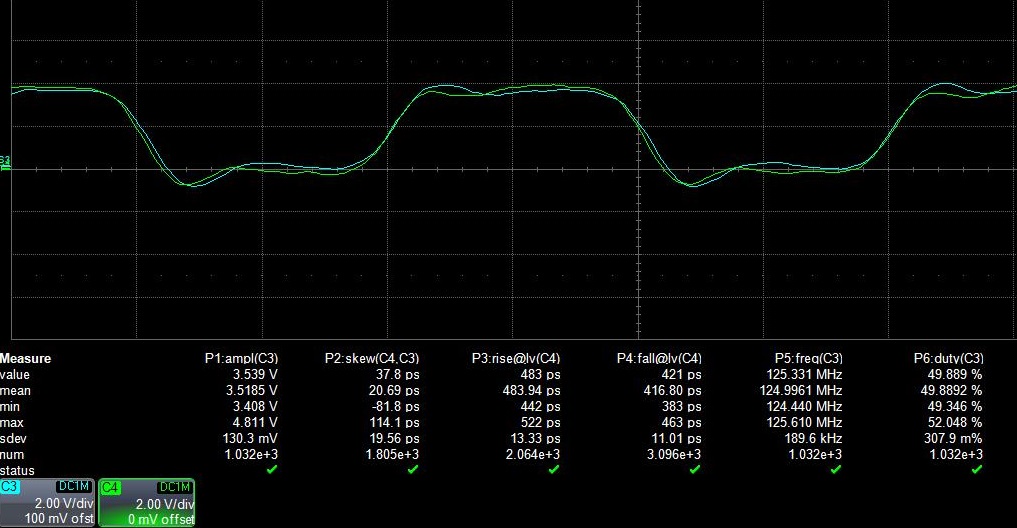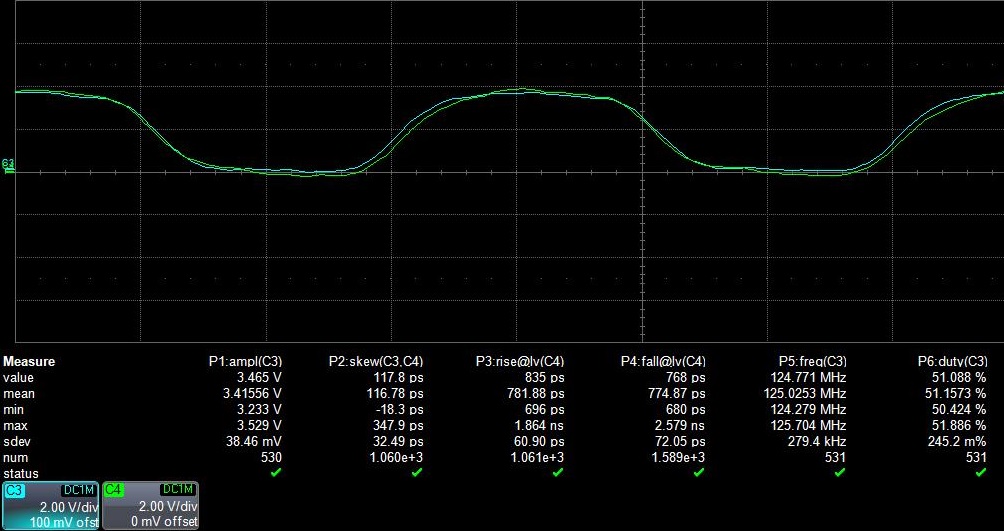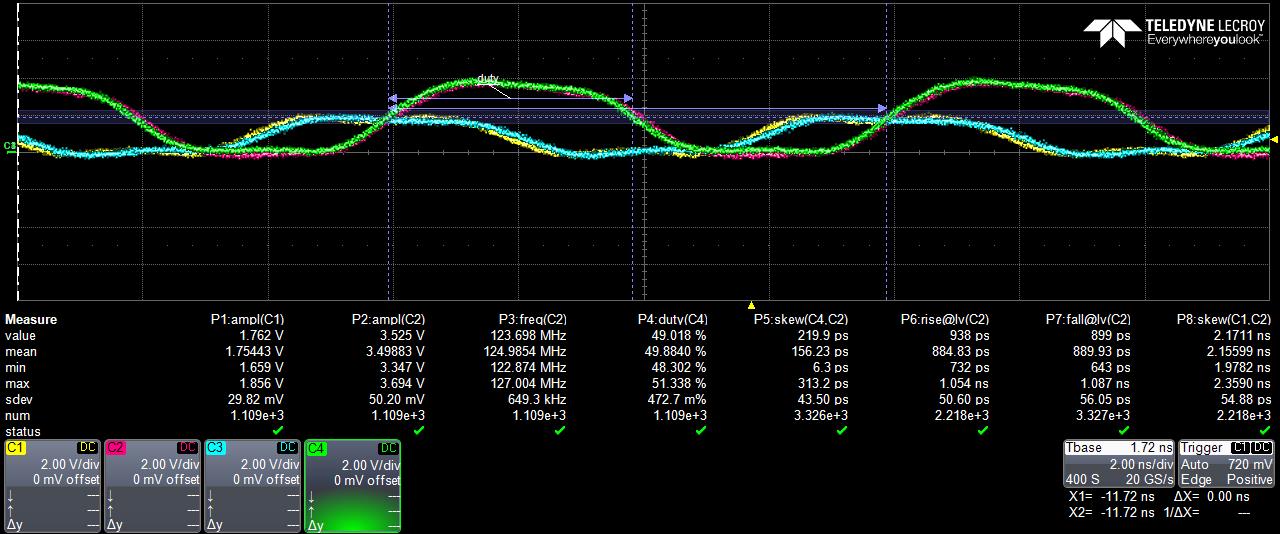SCEA143 December 2023 SN74AVC8T245 , SN74AVC8T245-Q1 , SN74AXC8T245 , SN74AXC8T245-Q1 , TXV0106 , TXV0106-Q1 , TXV0108 , TXV0108-Q1
3.2 Leveraging TXV for Timing Performance
Table 3-2 Bench - Timing Performance
| Parameter - 5 pF | TXV0108 (ns) | Competitor (ps) | TXV RGMII Margin | Comp RGMII Margin |
|---|---|---|---|---|
| 25°C Skew | 21 | 118 | 96 % better than spec | 76 % better than spec |
| 125°C Skew | 43 | 156 | 91 % better than spec | 69 % better than spec |
| 25°C Rise or Fall Time | 484 / 417 | 782 / 775 | 36 % better than spec | 4 % worst than spec |
| 125°C Rise or Fall Time | 555 / 507 | 885 / 890 | 26 % better than spec | 19 % worst than spec |
The output skew is defined as the time difference between the delay on output channels while driving equal loads. It is important in the RGMII interface for the high-speed clock to synchronize the data on RX and TX lines with maximum allowed skew of 500 ps and maximum rise and fall transition times of 750 ps. Table 3-5 shows how TXV passes and how competitor can fail, for the lower skew and faster transition requirement.
- Figure 3-1 measures the rise-to-rise output channel-to-channel skew for A-to-B direction rising-edge input under standard RGMII loading condition of 5 pF for TXV (measuring 21 ps, tighter skew) vs competitor (measuring approximately 6x looser skew).
- Figure 3-2 measures fall or rise times for TXV (measuring 484 / 417 ps) vs competitor (measuring approximately 2x slower rise or fall times >750 ps), violating RGMII requirement.
 Figure 3-1 TXV Outputs (5 pF 1.8 V to 3.3 V Up Translation at 125 MHz, 25°C)
Figure 3-1 TXV Outputs (5 pF 1.8 V to 3.3 V Up Translation at 125 MHz, 25°C) Figure 3-2 Competitor Outputs (5 pF 1.8 V to 3.3 V Up Translation at 125 MHz, 25°C)
Figure 3-2 Competitor Outputs (5 pF 1.8 V to 3.3 V Up Translation at 125 MHz, 25°C)- As temperature increases to 125°C, Figure 3-3 compares TXV0108 (measuring 555 / 507 ps rise or fall times, 43 ps tighter rise-to-rise skew) with competitor (measuring approximately 4x looser skew and approximately 2x slower rise or fall times >750 ps), violating RGMII’s timing budget shown in Figure 3-4.
 Figure 3-3 TXV Waveform (5 pF 1.8 V to 3.3 V Up Translation at 125 MHz, 125°C)
Figure 3-3 TXV Waveform (5 pF 1.8 V to 3.3 V Up Translation at 125 MHz, 125°C) Figure 3-4 Competitor Waveform (5 pF 1.8 V to 3.3 V Up Translation at 125 MHz, 125°C)
Figure 3-4 Competitor Waveform (5 pF 1.8 V to 3.3 V Up Translation at 125 MHz, 125°C)